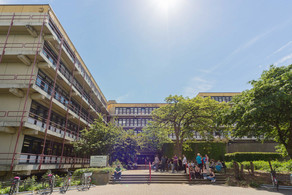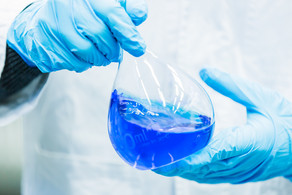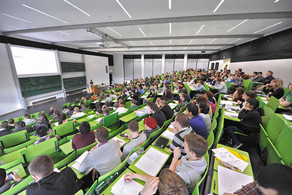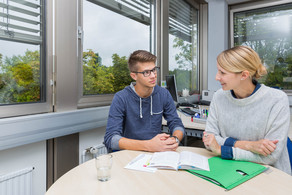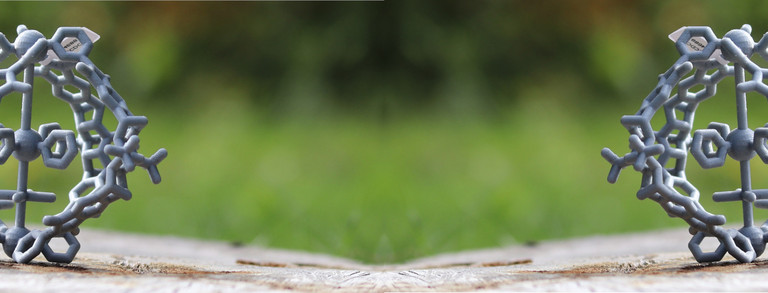Curriculum Vitae
University
| From 2015 | Prof. (W3) for Bioinorganic Chemistry at the Technical University Dortmund |
| 2013-2015 | Prof. (W2) at the Inorg. Chem. Dept. of the Georg-August-University Göttingen |
| 2010-2013 | Jun.-Prof. (W1) at the Inorg. Chem. Dept. of the Georg-August-University Göttingen |
| 2009-2010 | Project Assistant Professor at the Dept. of Chemistry, Grad. School of Science, Tokyo University. |
| 2007-2009 | Postdoc in the group of Prof. M. Shionoya, Tokyo University, working on the “Synthesis, characterization and host-guest chemistry of nanoscopic cages” supported by JSPS and the Alexander von Humboldt Foundation. |
| 2003-2006 | PhD thesis in the group of Prof. T. Carell on “Metal-Base Pairs in DNA”. First: Philipps University, Marburg, from Dec ‘03: Ludwig-Maximilians University, Munich. Dec 19th ’06: PhD exam (summa cum laude). |
| 2002-2003 | Diploma thesis on “Redox-functionalized tetra(hetero)arylmethanes” (Prof. T.J.J. Müller). Mar 17th ‘03: Diploma exam, subsidiary subject: molecular biology. |
| 2001 | Internship at the Institute for Molecular and Cell Biology, Singapore. Research project: “Oncoproteins of the Human Papilloma Virus” (Prof. H.U. Bernard). |
| 2000-2001 | Semester abroad at the University of Strathclyde, Glasgow, UK. Research project: “Surface Enhanced Raman-Spectroscopy” (Dr. D. Graham). |
| Jul-Aug ‘99 | Internship at Bayer AG, research centre Wuppertal-Elberfeld (Dr. T. Kraemer). |
| 1997-2003 | Studies of chemistry at the Ruprecht-Karls University, Heidelberg. |
Awards, Scholarships, Activities
- 2016 ERC Consolidator Grant.
- “Otto Hofmann Foundation” prize for pre-diploma.
- “Dr. Sophie Bernthsen Fonds“ prize for diploma.
- “Dr. Klaus Römer Foundation” prize for PhD thesis.
- ADUC Prize 2012 (Young Investigator Award) of the German Chemical Society (GDCh).
- FCI Dozentenpreis 2014 (Young Investigator Award) of the Fonds der Chemischen Industrie.
- Apr 2001 – Mar 2003 Fellow of the Studienstiftung des Deutschen Volkes.
- Oct 2003 – Sep 2005 Kekulé fellow of the Fonds des Verbandes der Chem. Industrie.
- Jun 2007 – Apr 2009 Postdoctoral fellow of JSPS and the Alexander von Humboldt Foundation.
- 2013 – Vertrauensdozent der Studienstiftung des Deutschen Volkes.
- International Advisor of the Japanese "Asymmetallic" Collaborative Research Consortium.
- JSPS Bridge Fellowship 2011 (9 lectures at Japanese Universities between Sept. 15th and Oct. 3rd)
- Invited participant of the Alexander von Humboldt SinoGFoS Symposium, Nanjing, China, 2012.
- Invited participant of the Alexander von Humboldt JaGFoS Symposium, Potsdam, Germany, 2016.
- Jun 2000: Participation at the 50. Nobel-Laureate-Meeting in Lindau (Klaus-Tschira Foundation).
- Oct 2005: Invitation to the “Roche Symposium for Leading Chemists of the Next Decade”, Basel.
- 2001: Founding member of a branch of the “Younger Chemist’s Committee” of the German Chemical Society (GDCh) in Heidelberg.
Memberships
- German Chemical Society (GDCh)
- Chemical Society of Japan (CSJ)
- JSPS Club
- American Chemical Society (ACS)
Research Interest
- Supramolecular Chemistry
- Chemistry inside Molecular Cages
- DNA Nano-Architecture
- Molecular Machines
Languages
- German (mother tongue)
- English (fluent)
- French (basics)
- Japanese (intermediate, JLPT level 3)

